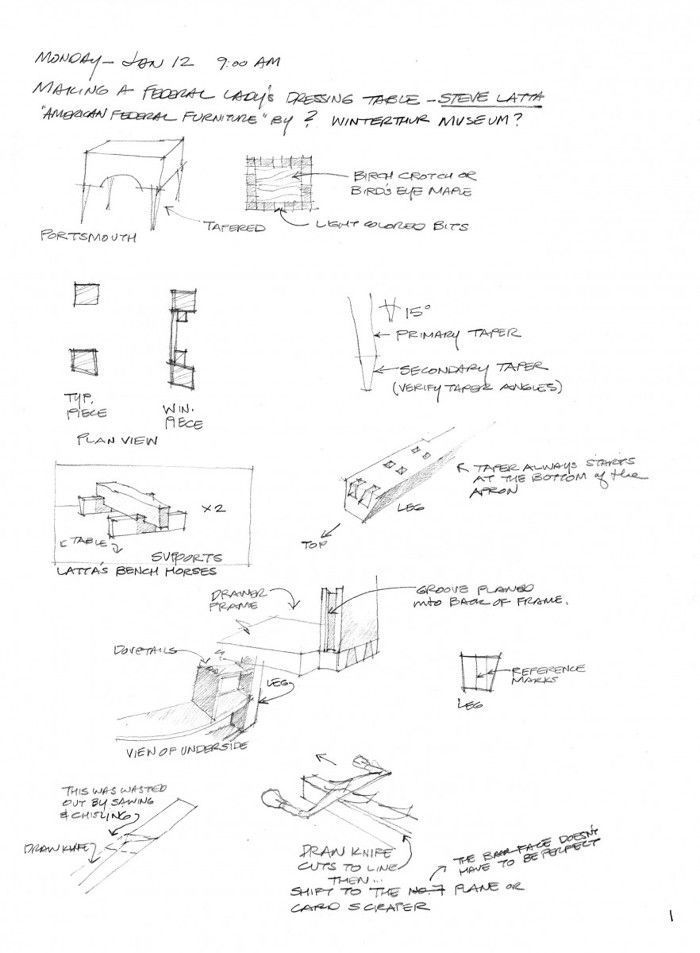
The theme of this year’s Working Wood in the 18th Century conference in Williamsburg was Bedroom Furniture (The bedroom furniture of a particularly well-heeled 18th Century family).
For those who attended this year’s conference, I hope that my sketches are helpful in reminding you of some of the excellent demonstrations we enjoyed and for those of you who weren’t able to attend, I hope they pique your curiosity and give you an idea of the richness of this yearly conference sponsored by Fine Woodworking and Colonial Williamsburg.
This year’s conference featured work by Steve Latta, well-known to readers of Fine Woodworking and a teacher at Thaddeus Stevens College in Lancaster, Pennsylvania, Mack Headley, master of the Hay’s Cabinet Shop, Kaare Loftheim, journeyman at the Hay’s Shop, Bill Pavlak and Brian Weldy, apprentices at the Hay’s Shop, and Tara Gleason Chicirda, Beth Gerhold, Kimberly Smith Ivey and Christopher Swan, all of Colonial Williamsburg.
Steve Latta began the conference with a demonstration of his techniques for reproducing a Federal style lady’s dressing table.

After describing joining the parts of the table, Steve demonstrated his method of making and applying stringing and the jigs and tools that he uses.

Steve demystified of the preparation of the card scraper and used a string cutting tool of his design (now available from Lie Nielson). Most of his work was done on a clever back-saving work bench.

Steve’s original thinning tool is also available from Lie Nielson. He recommended curling holly strips around a tool he created from brass tubing.
Next, Steve demonstrated sand shading for the holly petals and the subsequent placing of the petals on the work and the inlay technique.

Bill Pavlak of the Hay’s Cabinet Shop at Williamsburg demonstrated the reconstruction of a child’s mahogany cradle. This was followed by Brian Weldy’s (also of the Hay’s Shop) discussion of looking glasses of the period and their construction.

The first day of the conference concluded with Kaare Loftheim (Hay’s Cabinet Shop) cutting and carving a cabriole leg.

Steve Latta continued construction on the lady’s dressing table and demonstrated his method of creating and applying the banding on the table’s legs.

The possibilities for creating banding are a bit overwhelming with the infinite combinations of blocks. Creation of curved banding is a challenge, but his ingenious jig helps.
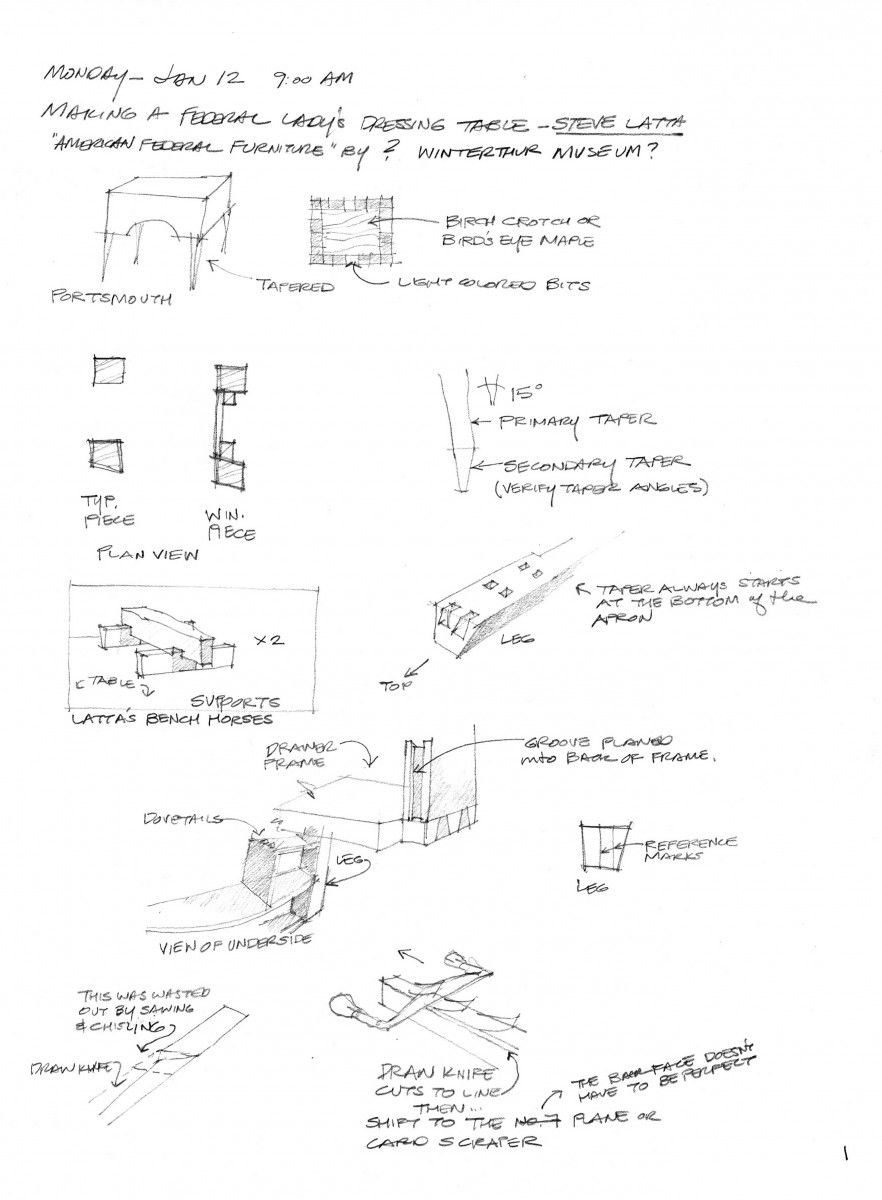
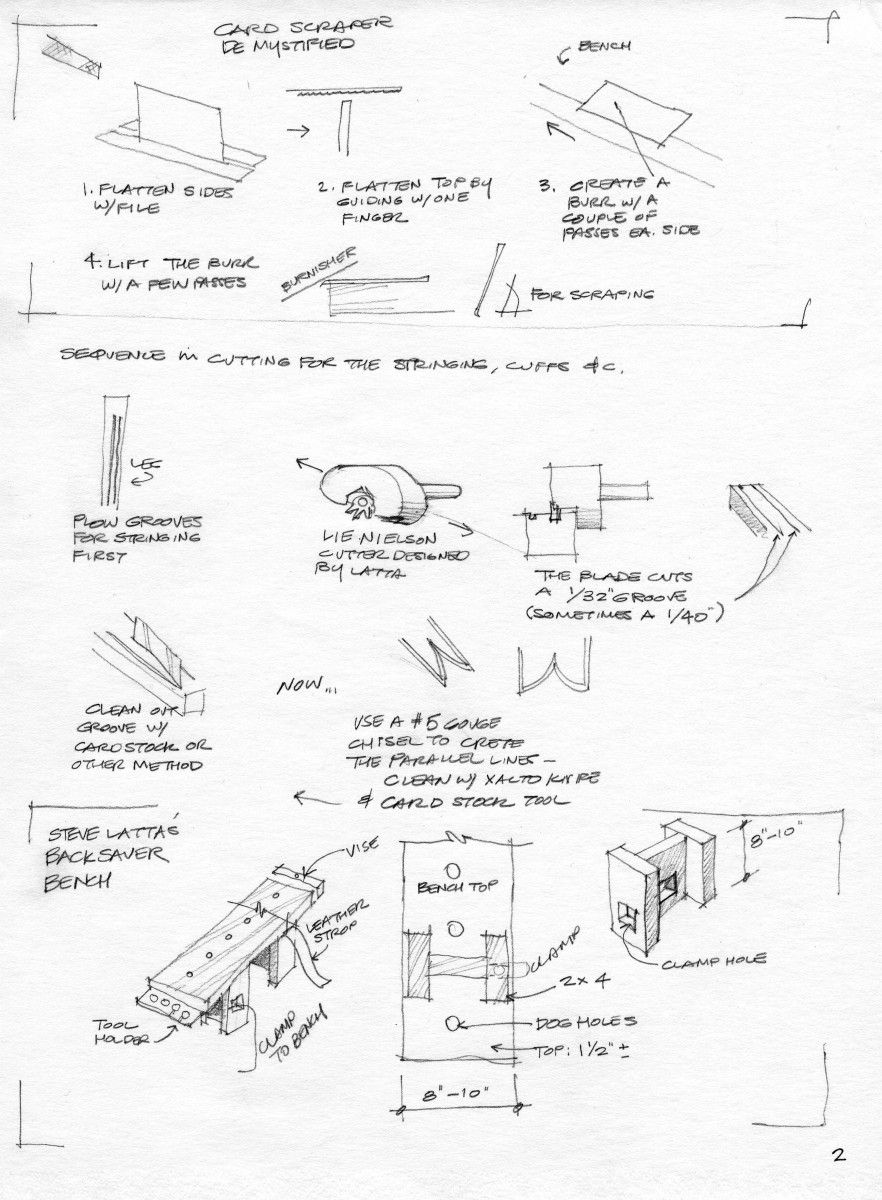
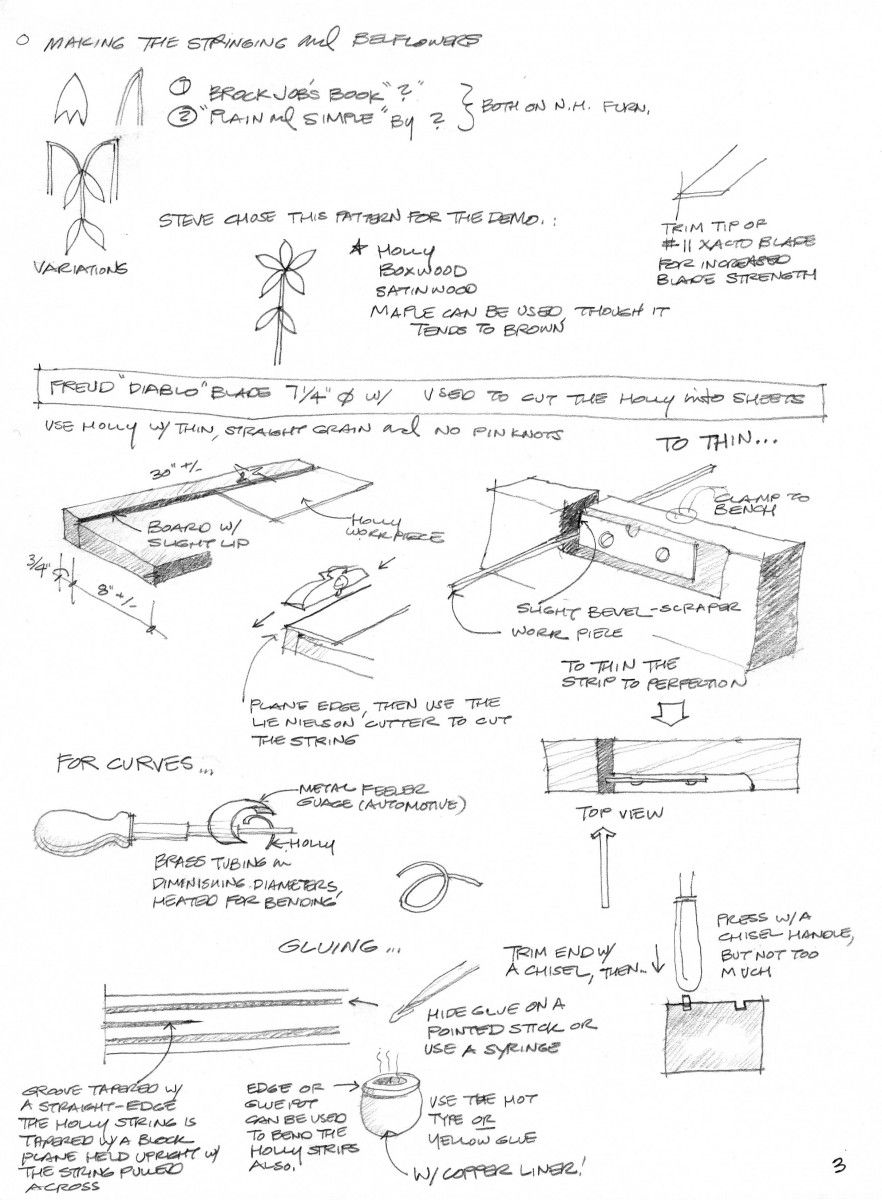
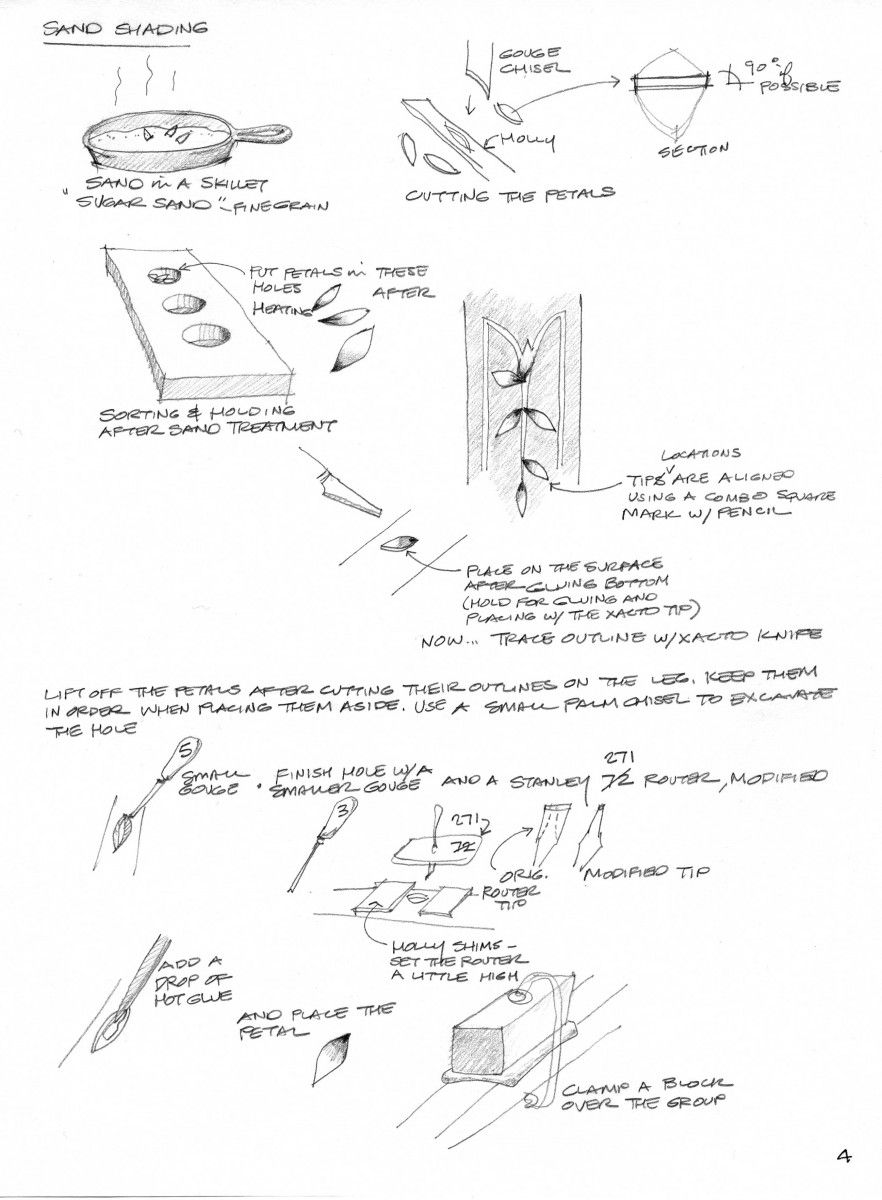
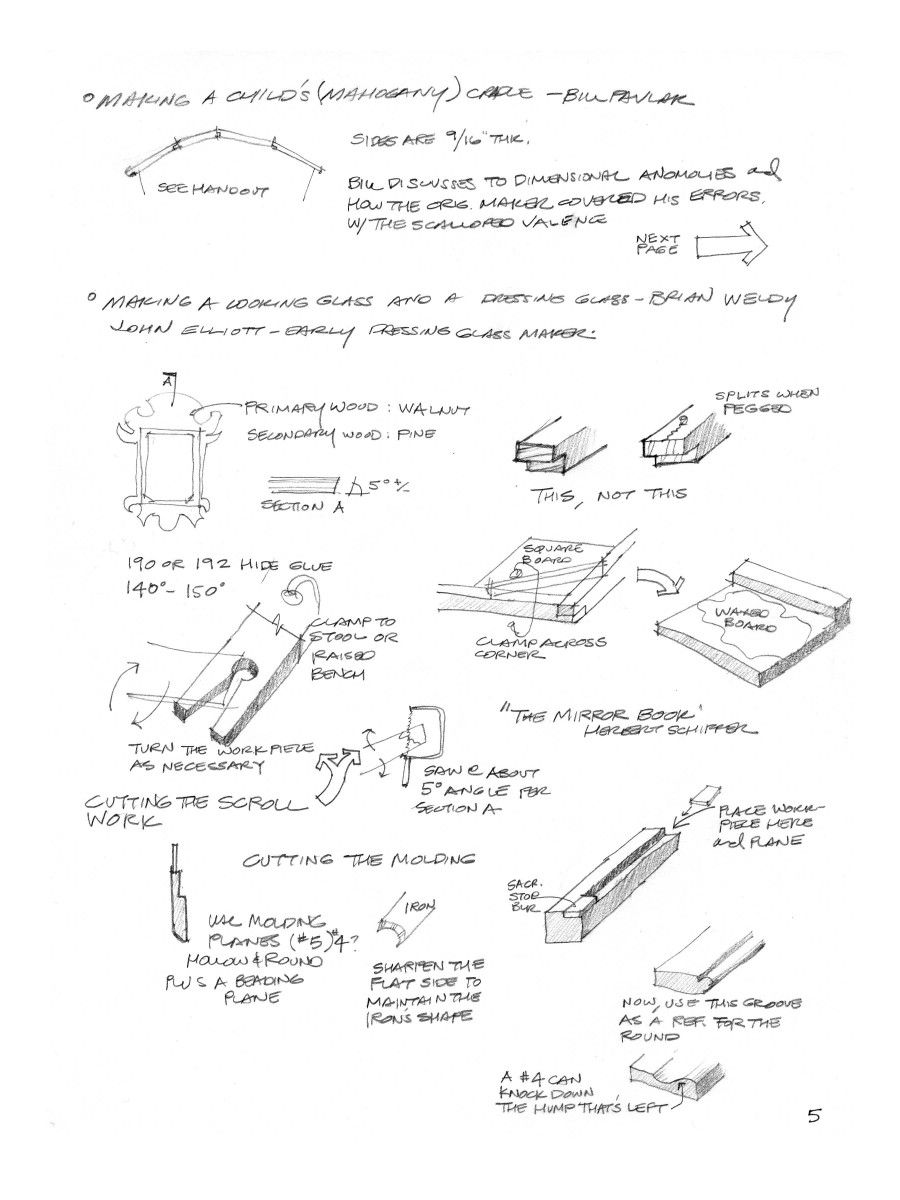
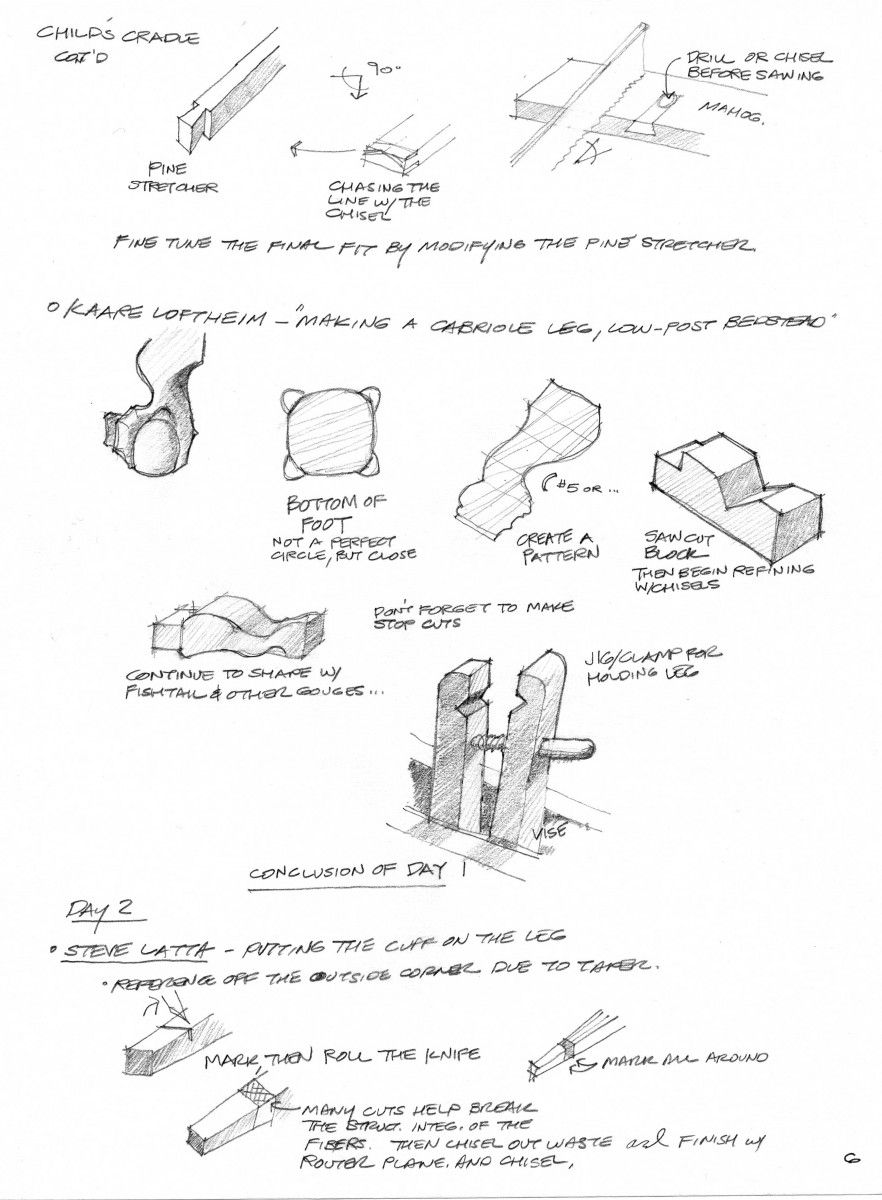
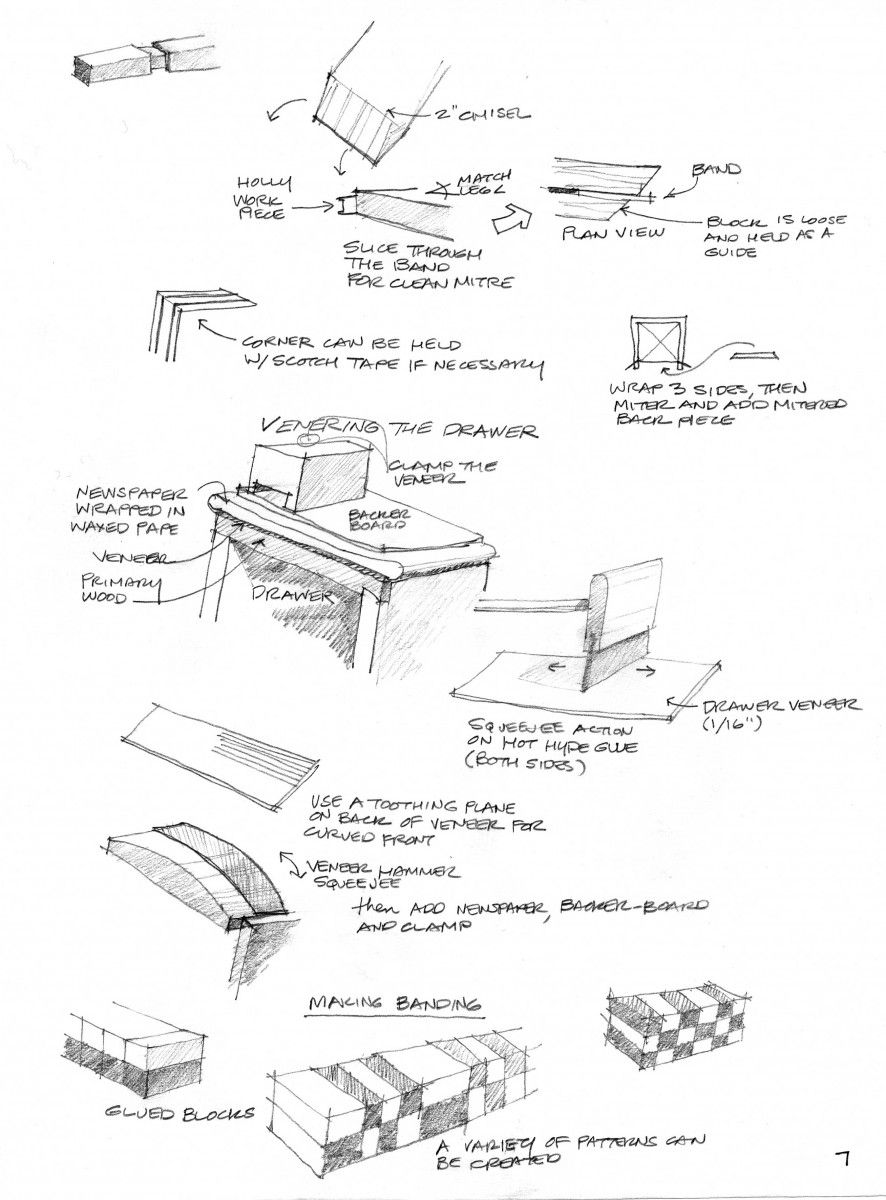




















Comments
Great addition to help supplement oue own notes. Very much appreciated. Suggest you add your name as the author/contributor on one of the sketch pages for future reference.
Is there some way to contrast the notes and sketches with the background to make it more visible?
I was blown away by the confernece and your sketches are a great addition. In fact, I was inspired that I have begun the arduous task of trying to build a set of Chippendale, balland claw footed dining room chairs. Just wondering if you or anyone else has a set of plans of ven a good description for the clamp that was used during the demo of carving the ball and claw foor. Noted that a version of that clamp was also being used for carving feet in the series of articles appearing in Popular Woodworking. Any help from anyone would be appreciated.
Log in or create an account to post a comment.
Sign up Log in